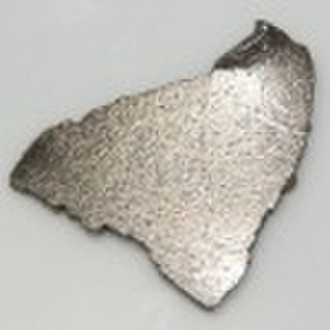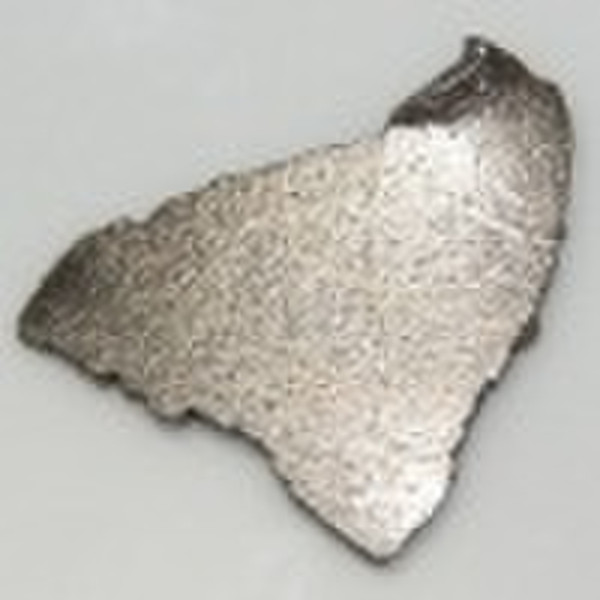Каталог
-
Каталог
- Автомобили и мотоциклы
- Безопасность и защита
- Бизнес
- Бытовая техника
- Бытовая электроника
- Детали машин и услуги по их изготовлению
- Дом и Сад
- Здоровье и медицина
- Игрушки и хобби
- Изделия из металла
- Измерительные и анализирующие приборы и инструменты
- Инструмент
- Красота и личная гигиена
- Мебель
- Мероприятия по охране окружающей среды
- Минералы и металлургия
- Модные аксессуары
- Обувь и аксессуары
- Одежда
- Освещение
- Подарки, сувениры
- Продовольственные товары и напитки
- Промышленное оборудование и техника
- Резина и пластмассы
- Сельское хозяйство
- Специальное оборудование
- Спорт, отдых и досуг
- Сток
- Строительство и недвижимость
- Текстиль и кожа
- Телекоммуникации
- Товары для офиса, учебы. Канцтовары
- Транспорт
- Упаковка и печать
- Химикаты
- Часы, Украшения, Очки
- Чемоданы, сумки
- Электронные компоненты, оборудование, принадлежности
- Электротехническое оборудование и принадлежности
- Энергия
Filters
Search

Cobalt хлопья
ориг. цена: 45,00 USD
Сучжоу, Китай
Сучжоу, Китай
0086-512-66653416

Leo Smith
Контактное лицо
Основные данные
| Место происхождения | Jiangsu China (Mainland) |
|---|---|
| Бренд | FENGGANG |
| Номер Модели | FG199 |
| Применение | Catalyzer |
| Форма | Square |
| Материал | Cobalt |
| Размеры | 99.96% Purity |
| Химический состав | Co |
Characteristics Cobalt is a ferromagnetic metal with a specific gravity of 8.9 (20°C). Pure cobalt is not found in nature, but compounds of cobalt are common. Small amounts of it are found in most rocks, soil, plants, and animals. It has the atomic number 27. The Curie temperature is 1115 °C, and the magnetic moment is 1.61.7 Bohr magnetons per atom. In nature, it is frequently associated with nickel, and both are characteristic minor components of meteoric iron. Mammals require small amounts of cobalt which is the basis of vitamin B12. Cobalt-60, an artificially produced radioactive isotope of cobalt, is an important radioactive tracer and cancer-treatment agent. Cobalt has a relative permeability two thirds that of iron. Metallic cobalt occurs as two crystallographic structures: hcp and fcc. The ideal transition temperature between hcp and fcc structures is 450 °C, but in practice, the energy difference is so small that random intergrowth of the two is common.[ Applications Alloys Cobalt-based superalloys consume most of the produced cobalt. The temperature stability of these alloys makes them suitable for use in turbine blades for gas turbines and jet aircraft engines, though nickel-based single crystal alloys surpass them in this regard. Cobalt-based alloys are also corrosion and wear-resistant.Special cobalt-chromium-molybdenum alloys are used for prosthetic parts such as hip and knee replacements.Cobalt alloys are also used for dental prosthetics, where they are useful to avoid allergies to nickel.Some high speed steels also use cobalt to increase heat and wear-resistance. The special alloys of aluminium, nickel, cobalt and iron, known as Alnico, and of samarium and cobalt (samarium-cobalt magnet) are used in permanent magnets. Batteries Lithium cobalt oxide (LiCoO2) is widely used in Lithium ion battery electrodes.Nickel-cadmium (NiCd) and nickel metal hydride (NiMH) batteries also contain significant amounts of cobalt. Catalyst Several cobalt compounds are used in chemical reactions as catalysts. Cobalt acetate is used for the production of terephthalic acid as well as dimethyl terephthalic acid, which are key compounds in the production of Polyethylene terephthalate. The steam reforming and hydrodesulfuration for the production of petroleum, which uses mixed cobalt molybdenum aluminium oxides as a catalyst, is another important application. Cobalt and its compounds, especially cobalt carboxylates (known as cobalt soaps), are good oxidation catalysts. They are used in paints, varnishes, and inks as drying agents through the oxidation of certain compounds.The same carboxylates are used to improve the adhesion of the steel to rubber in steel-belted radial tires. Pigments and coloring Cobalt blue glassBefore the 19th century, the predominant use of cobalt was as pigment. Since the midage the production of smalt a blue colored glas was known. Smalt is produced by melting a mixture of the roasted mineral smaltite, quartz and potassium carbonate, yielding a dark blue silicate glass which is grinded after the production.Smalt was widely used for the coloration of glass and as pigment for paintings.[26] In 1780 Sven Rinman discovered cobalt green and in 1802 Louis Jacques Thénard discovered cobalt blue.The two colors cobalt blue, a cobalt aluminate, and cobalt green, a mixture of cobalt(II) oxide and zinc oxide, were used as pigments for paintings due to their superior stability. Cobalt has been used to color glass since the Bronze Age. The excavation of the Uluburun shipwreck yielded an ingot of blue glass which was cast during the 14th century BC.Blue glass items from Egypt are colored with copper, iron, or cobalt. The oldest cobalt-colored glass was from the time of the Eighteenth dynasty (15501292 BC). The location where the cobalt compounds were obtained is unknown. Other uses Electroplating due to its appearance, hardness, and resistance to oxidation Ground coats for porcelain enamels Purification of histidine-tagged fusion proteins in biotechnology applications
Условия поставки и упаковка
Packaging Detail: Standard Steel Drum Delivery Detail: Within 1 week against copy of remittance
Порт: SHANGHAI
Условия оплаты
Аккредитив
Электронный перевод
Вестерн Юнион
-
Способы оплаты
Для оплаты товаров и услуг на нашем портале, Вы всегда получаете счет, в котором Вам необходимо самостоятельно указать свои данные.
Мы принимаем к оплате:








